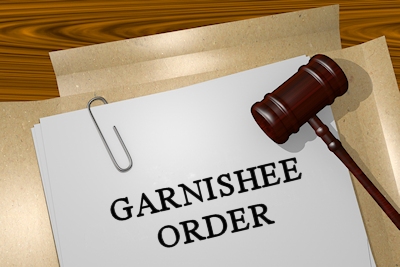Handy Guide for the Employee AND Employer on Garnishee Court Orders (EAO’s).
This document can be downloaded as a PDF from this link:
EAO – An Employee’s Guide to Emolument Attachment Orders

How to process an order
What is an emolument attachment order (EAO)
It is a Court Order instructing your employer to make deductions from your remuneration in settlement of a debt owed by you.
An EAO is granted in terms of Section 65J of the Magistrates’ Courts Act (“MCA”), ordering an employer to make deductions from your salary or wages and pay this across to the creditor or its attorneys.
Your employer cannot ignore the Court Order or refuse to make payment in terms of the order.
- How much can be deducted from the salary or wage?
The amount to be deducted from your salary or wage must be clearly set out in the garnishee order. The judgment creditor (the person who lent the money) is able to claim the following:
- full amount of the money loaned, less payments already made by you
- interest on the outstanding balance;
- costs incurred by the judgment creditor to collect the money;
- sheriff’s fees.
- How does an EAO (garnishee) come about?
- You are behind on your instalment payments under a credit agreement.
- You receive written notice of the default by registered mail.
- S.129 letter of demand
- Payment of the outstanding amount is demanded by the credit provider
- 20 business days have elapsed since the default
- The credit provider will propose that you refer the matter to a debt counsellor, alternative dispute resolution agent, consumer court to resolve the matter or bring your payments up to date
- Or you may contact the credit provider and agree to a repayment plan
- You have 10 days to respond
- If you ignore the request
- A court file is opened, and a case number assigned by the clerk of the court
- A summons is issued
- The Sheriff of the court will serve the summons
- You have 10 days to file a notice of intention to defend
- If you fail to react to this summons
- The credit provider can apply to the court for a default judgment
- This judgment is recorded on all your credit records at all credit bureaus
- It can only be removed if you pay the outstanding amount
- It can be rescinded if you contact the credit provider to make payment arrangements
- Once a default judgment has been granted the creditor can have a warrant of execution served against you
- The Sheriff serves the warrant and attaches your movable property
- This property is sold in execution in order to satisfy the judgment debt
- In most instances the creditor initiates S.65 proceedings in terms of the Magistrates Courts Act
- S.65 hearing is a financial enquiry as to your financial circumstances
- You are required to submit a statement of assets and liabilities, income, and expenditure
- Assessment is made and a repayment amount agreed upon
- An EAO (garnishee) is granted by order of the court.
- How to determine whether a garnishee order is valid
A genuine garnishee order is an order by the court. It is served by the messenger of the court, also known as the sheriff, on the employer. The sheriff will show the employer the original order and a copy is left with the employer.
The original garnishee order must contain the following:
- a case number;
- a stamp from the clerk of the court;
- signed by the attorney;
- your full name as well as identity number or staff number
5. What does an employer do when a sheriff issues a garnishee order
When the sheriff attempts to serve a garnishee order on the employer, before accepting such service, the employer must:
- First check that the employee is still in the employ of the organisation. If the employee is no longer in the employ of the organisation, you should not and cannot accept service of the order and the sheriff must be told the person is no longer employed;
- Check that the original order has:
- a case number;
- has been originally signed by the clerk of the court;
- has been originally signed by the attorney;
- full name as well as identity number or staff number of the employee on it;
- Once you have confirmed that the order complies with the above, and that the employee is still in the employ of the organisation, it must immediately be loaded onto a garnishee system so that deductions can commence from the employee’s salary or wage;
- A copy of the order must be sent to the employee so that the employee is informed about the order and if the employee has any queries regarding the order, he/she will have the details of the order in his possession to make the queries with the judgment creditor;
- If the order is defective in any way, the employer should advise the sheriff that he refuses to accept service and require the sheriff to record such refusal (although the sheriff will probably just leave a copy with you) and immediately thereafter send a letter to the judgment creditor advising the judgment creditor of the difficulty with the order.
- Employee’s rights
When a garnishee order is granted in respect of an employee, he is not without rights.
An employee has the following rights:
- to dispute the amount claimed if it appears to be incorrect;
- to apply to court to reduce the amount of the order when the employee is unable to meet his and his dependents maintenance costs;
- to be furnished, by the creditor or his attorney, free of charge, with a statement containing particulars of payments received up to the date concerned and the balance owing.
- What to do if you believe you don’t owe the money at all or the amount claimed:
The Magistrate’s Court Act provides that an order can be set aside if a good reason can be shown to do so. A good reason would be:
- that you have already paid the debt;
- that you have paid a portion of the debt and that the amount claimed is too high;
- that you never incurred the debt.
It would be necessary to go to court to have the order set aside.
Issuing of EAOs
EAOs must be issued in the jurisdiction in which the judgment debtor resides or is employed.
Each page of the original court order (a copy is handed to the employer) should have the court’s stamp as well as a case number.
The EAOs must be served by a sheriff of the court either in person or by registered mail.
An EAO may be set aside or amended if the debtor can prove that the portion of his wages left after the instalment is deducted is insufficient to provide for himself and his dependents.
The onus is on the employee to apply to court to have the order amended.
EAOs are capped at 40% of a state employee’s salary. This is uncapped in the private sector.
- Intervention
- Communication: Offer assistance to the employee and discuss his financial situation.
- Education: Financial literacy programmes. Use employee wellness programmes to assist over-indebted employees
- Always read the documents that you sign
- Always ask for copies that you can keep
- Never sign a blank document
- Do not consent to a judgment in the loan agreement
- Get advice before entering into a credit agreement
- Payroll Administrators: To be up skilled. Maintain accurate records.
- Compile a database: Employers to compile a database of the incidence and nature of EAOs.
- Strategic alliances: Employers should form alliances with reliable, financial advisors, debt counsellors and reputable credit providers
- Legislative change: There is a compelling case for legal reform on garnishee orders.
- WHAT WE CAN DO FOR YOU (Vecto Finance)
- Obtain a loan application from you for the full amount owing
- Perform a credit check and affordability assessment per our normal procedures
- You then provide us with a copy of the court order
- Contact the debt collector or attorney and make an offer of settlement
- Pay over the settlement amount and obtain a letter of confirmation
- You now have a “clean” debt owing to Vecto
- Regulated and compliant
- Affordable repayment terms
- Short-Term
- Your credit record is cleared.
| [email protected] www.vectofinance.co.za Tel 021 852 9797 Fax 021 852 9151 Vecto Finance Employee Benefits Arun Place Suite 7C, Sir Lowry’s Pass Road, Somerset West, 7130 |
This Document Copyright (c)2022 Vecto Finance Pty Ltd.



